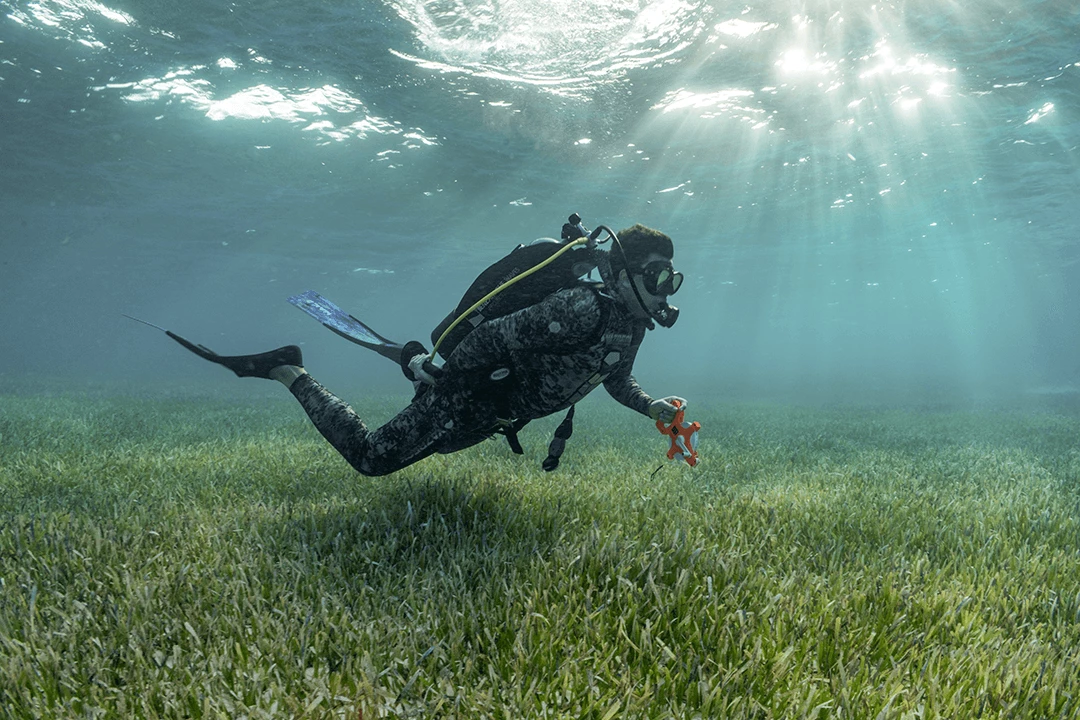Tiger sharks have a strong symbiotic relationship with seagrass ecosystems, playing the role of apex predator to prevent overgrazing by other species while at the same time patrolling the underwater meadows for sustenance. Scientists studying these species have leveraged their far-roaming tendencies to map out the largest seagrass system in the world, by using cameras attached to their backs.
The work comes from researchers at Saudia Arabia’s King Abdullah University of Science and Technology in collaboration with non-profit Beneath the Waves, and stems from earlier work on conservation of tiger sharks in The Bahamas. As part of their efforts to better understand the animal and guide conservation methods into the future, the scientists started attaching 360-degree cameras to their backs to learn about their behavior.
When the footage collected by the sharks showed them skimming across vast expanses of seagrass meadows in The Bahamas, the scientists got some ideas. These ecosystems are difficult to map, as satellites observations can be obscured by glare and there are limitations to how much can be ascertained from diver surveys. But the observations gathered by the roaming sharks enabled the team to fill in the blanks left by these existing tools, to offer a more complete picture of seagrass coverage.
"The marine ecosystem in The Bahamas, which two decades ago I was able to admire in awe from a commercial plane, contains the largest sand banks in the world, which are shallow habitats perfectly suited to growing seagrass," said study co-author Professor Carlos Duarte. "We thought that The Bahamas likely had an extensive seagrass ecosystem, but the true spatial estimate had never been properly quantified, because surveying this vast area remains challenging."

The team’s estimates for the size of the seagrass ecosystem is between 66,000 and 92,000 sq km (25,000 to 35,000 sq miles). With the help of the wild tiger sharks, the scientists have therefore characterized the world’s largest seagrass ecosystem.
"Research led by Beneath The Waves had shown that tiger sharks spend about 72% of their time patrolling seagrass beds, which can be observed by the 360-degree cameras we deployed on the sharks, for the first time in marine animals," Dr. Duarte said. "This provided an opportunity to expand ground-truthing across the vast, challenging depths of the Bahamas Banks, as tiger sharks cover about 70 km (43 mil) in one day and are not constrained, as human divers are, to shallow depths."
Seagrass meadows are important elements of the broader marine ecosystem, promoting ocean biodiversity, guarding shorelines from the worst effects of storms and acting as an important source of carbon sequestration. They can also live an incredibly long time. Earlier this year, scientists discovered a singular 180-km-long (112-mile) seagrass described as the largest plant in the world. That example was calculated to be 4,500 years old, revealing fascinating genetic insights into how plants endure under long-term environmental changes.
The authors of this study believe the work also serves as an example of how collaborating with marine animals can help fill in gaps in our knowledge of the ocean ecosystem.
The research was published in the journal Nature Communications.




